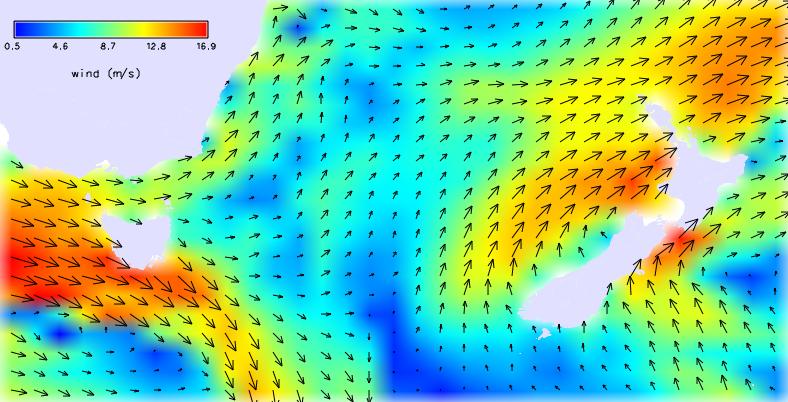GRIB: Difference between revisions
m (→GRIB data: wmo link) |
(→GRIB data: link to data download site) |
||
| Line 2: | Line 2: | ||
Meteorological data from the [http://www.wmo.int WMO] is supplied in GRIB format. See the [http://www.gdal.org/frmt_grib.html GDAL GRIB format page]. | Meteorological data from the [http://www.wmo.int WMO] is supplied in GRIB format. See the [http://www.gdal.org/frmt_grib.html GDAL GRIB format page]. | ||
* Some data available here: http://www.globalmarinenet.net/grib.htm | |||
Newer versions of [http://www.gdal.org GDAL] can read this data (i.e. newer than the 1.5 branch; SVN trunk is best), and it can be imported with {{cmd|r.in.gdal}}. | Newer versions of [http://www.gdal.org GDAL] can read this data (i.e. newer than the 1.5 branch; SVN trunk is best), and it can be imported with {{cmd|r.in.gdal}}. | ||
Revision as of 10:31, 25 October 2008
GRIB data
Meteorological data from the WMO is supplied in GRIB format. See the GDAL GRIB format page.
- Some data available here: http://www.globalmarinenet.net/grib.htm
Newer versions of GDAL can read this data (i.e. newer than the 1.5 branch; SVN trunk is best), and it can be imported with r.in.gdal.
It often contains a small number of cells but many many bands (layers).
View band metadata with gdalinfo.
- see also the Meteorology wiki page
Processing
A mini-tutorial follows.
The data is in Lat/Lon on a Sphere. It is not quite correct to import into a Lat/Lon WGS84 location, but the resolution is so crude that you might be able to hold your nose and do so anyway.
- There may be a cell-registration bug: (grid vs cell-center convention) cells all offset to the east and south?
- Currently band metadata is not automatically copied with the import. Add it in manually with "r.support history=".
Convert latest u,v components of wind to GeoTiff (not really needed, but easier to debug) and import into GRASS:
No-data (NULL) values are flagged as "9999" in the file.
$ gdal_translate -b 1 -a_nodata 9999 TasmanSea.wind.grb TasmanSea.wind.u_wind_latest.tif $ gdal_translate -b 2 -a_nodata 9999 TasmanSea.wind.grb TasmanSea.wind.v_wind_latest.tif r.in.gdal in=TasmanSea.wind.u_wind_latest.tif \ out=TasmanSea.wind.u_wind_latest -o r.in.gdal in=TasmanSea.wind.v_wind_latest.tif \ out=TasmanSea.wind.v_wind_latest -o
or import into GRASS directly:
r.in.gdal in=TasmanSea.wind.grb band=1 out=TasmanSea.wind.u_wind_latest r.in.gdal in=TasmanSea.wind.grb band=2 out=TasmanSea.wind.v_wind_latest r.null TasmanSea.wind.u_wind_latest setnull=9999 r.null TasmanSea.wind.v_wind_latest setnull=9999
Convert U,V velocity component maps into magnitide,direction maps for use with d.rast.arrow:
g.copy TasmanSea.wind.u_wind_latest,U_map g.copy TasmanSea.wind.v_wind_latest,V_map g.region rast=TasmanSea.wind.u_wind_latest -p r.mapcalc 'magnitude = sqrt(U_map^2 + V_map^2)' r.mapcalc 'direction = atan(U_map, V_map)'
Display:
d.mon x0 r.colors magnitude col=bcyr d.rast magnitude d.vect admin98 type=area fcol=225:225:255 color=none d.rast.arrow map=direction type=grass magnitude_map=magnitude \ grid=none arrow=black d.legend map="magnitude" at=90.3,94.7,1.8,26.5 echo "wind (m/s)" | d.text color=black at=13.8,80.6 size=3 align=lc
Export to a PNG image using the Cairo driver:
d.out.file -c TasmanSea_winds_latest
Resulting image:
Create 2 m/s contours:
r.contour in=magnitude out=current_wind_2ms step=2
